
Bodmin is a town and civil parish in Cornwall, England, United Kingdom. It is situated south-west of Bodmin Moor.
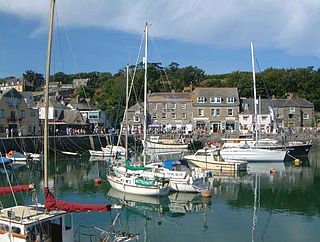
Padstow is a town, civil parish and fishing port on the north coast of Cornwall, England. The town is situated on the west bank of the River Camel estuary approximately 5 miles (8.0 km) northwest of Wadebridge, 10 miles (16 km) northwest of Bodmin and 10 miles (16 km) northeast of Newquay. The population of Padstow civil parish was 3,162 in the 2001 census, reducing to 2,993 at the 2011 census. In addition an electoral ward with the same name exists but extends as far as Trevose Head. The population for this ward is 4,434

The River Camel is a river in Cornwall, England. It rises on the edge of Bodmin Moor and with its tributaries its catchment area covers much of North Cornwall. The river flows into the eastern Celtic Sea between Stepper Point and Pentire Point having covered about 30 miles, making it the second longest river wholly in Cornwall. The river is tidal upstream to Egloshayle and is popular for sailing, birdwatching and fishing. The name Camel comes from the Cornish language for 'the crooked one', a reference to its winding course. Historically the river was divided into three named stretches. Heyl was the name for the estuary up to Egloshayle, the River Allen was the stretch between Egloshayle and Trecarne, whilst the Camel was reserved for the stretch of river between its source and Trecarne.

Wadebridge is a town and civil parish in north Cornwall, England, United Kingdom. The town straddles the River Camel five miles upstream from Padstow. The permanent population was 6,222 in the census of 2001, increasing to 7,900 in the 2011 census. There are two electoral wards in the town. Their total population is 8,272.

James Piers St Aubyn, often referred to as J P St Aubyn, was an English architect of the Victorian era, known for his church architecture and confident restorations.

Advent is a civil parish on the north-western edge of Bodmin Moor in north Cornwall, England. The English name St Adwenna derives from the Cornish Adhwynn and lies in the Registration District of Camelford.

Egloshayle is a civil parish and village in north Cornwall, England, United Kingdom. The village is beside the River Camel, southeast of Wadebridge. The civil parish stretches southeast from the village and includes Washaway and Sladesbridge.
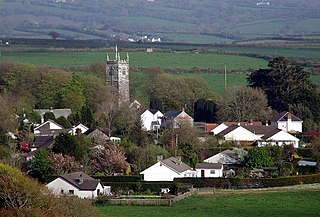
St Tudy is a civil parish and village in north Cornwall, England, United Kingdom. The village is situated in the River Camel valley approximately five miles northeast of Wadebridge.
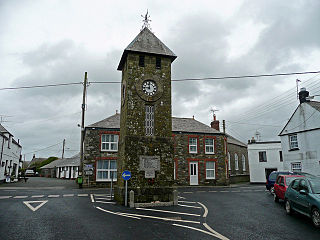
St Teath is a civil parish and village in north Cornwall, England, in the United Kingdom.

Botus Fleming or Botusfleming is a village and civil parish in southeast Cornwall, England, United Kingdom. The 2001 census gives the parish population as 783,which decreased to 771 at the 2011 census. The village is about three miles north-west of Saltash at grid reference SX 403 612. There is a public house, a market garden and a small colony of artists, but the village is mostly a dormitory area for Plymouth.
St Merryn is a civil parish and village in north Cornwall, England, United Kingdom. It is about 3.5 miles (5.6 km) south of the fishing port of Padstow and 11 miles (18 km) northeast of the coastal resort of Newquay.
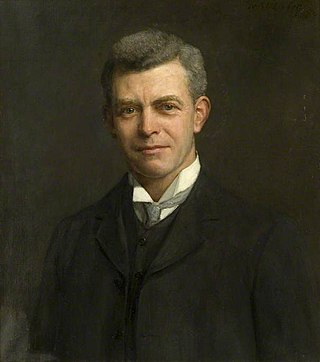
Sir Charles Archibald Nicholson, 2nd Baronet, was an English architect and designer who specialised in ecclesiastical buildings and war memorials. He carried out the refurbishments of several cathedrals, the design and build of over a dozen new churches, and the restoration of many existing, medieval parish churches.

St Endellion is a civil parish and hamlet in north Cornwall, England, United Kingdom. The hamlet and parish church are situated four miles (6.5 km) north of Wadebridge.

Little Petherick is a village and former civil parish, now in the parish of St Issey, in the Cornwall district, in north Cornwall, England, United Kingdom. It is situated two miles south of Padstow and 6 miles west of Wadebridge. Little Petherick lies in the valley of Little Petherick Creek, a tidal tributary of the River Camel: however, upstream of Little Petherick the creek ceases to be tidal. The village straddles the A389 Wadebridge-Padstow road which crosses the creek at the east end of the village on a Grade II listed 19th century bridge. In 1931 the parish had a population of 178. On 1 April 1934 the parish was abolished and merged with St Issey.

St Breock is a village and a civil parish in north Cornwall, England, United Kingdom. The spelling St Breoke was also formerly in use.
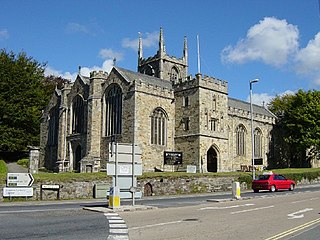
St Petroc's Church, Bodmin, also known as Bodmin Parish Church, was a Roman Catholic Church until the reformation and is currently an Anglican parish church in the town of Bodmin, Cornwall, England, United Kingdom.
The Parish Church of St Mary and St Petroc is a congregation of the Roman Catholic Church in Bodmin, Cornwall, United Kingdom. The parish church is the former monastic church of the Abbey of St Mary, a community of canons regular, whose origins on the site date back to the Middle Ages.
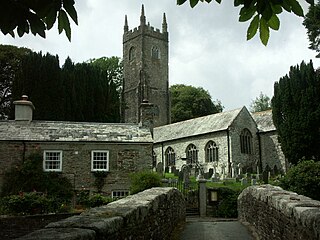
St Nonna's Church, also known as the Cathedral of the Moors, is the second largest church on Bodmin Moor, Cornwall, located in the village of Altarnun. The dedication is to Saint Non or Nonna, who was the mother of St David. The church is mentioned in Daphne du Maurier's Jamaica Inn; it is the church in which the evil vicar of Altarnun Francis Davey depicts himself in a painting as a wolf while the members of his congregation have the heads of sheep.

St Ildierna's Church, Lansallos is a Grade I listed parish church in the Church of England in Lansallos, Cornwall, built in the early 14th Century. The church is noted for its 16th Century benches and bench ends. Serious damage was caused to the church, especially the roof, by a fire in 2005.

All Saints’ Church, Tuckingmill is a Grade II listed parish church in the Church of England in Pendarves Street, Tuckingmill, Camborne, Cornwall.



















